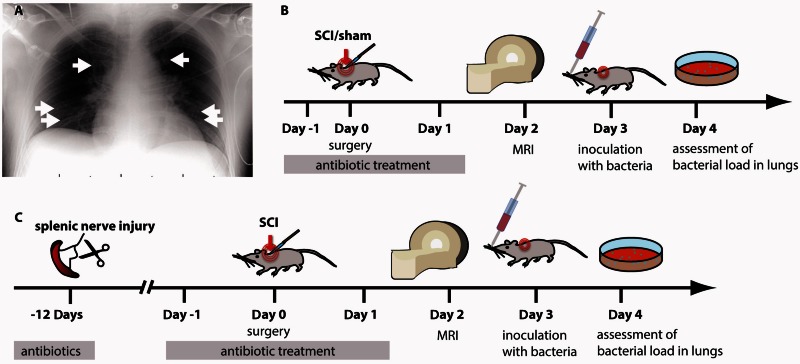Figure 1.
Human and controlled experimental SCI-associated pneumonia (SCI-AP). (A) Typical SCI-AP occurs with an onset from Day 2–7 (Berlly and Shem, 2007) in humans and is caused by community-acquired pathogens, prevailingly S. pneumonia (white arrows: pneumonic infiltrates). SCI-AP is antedated by onset of SCI-IDS beginning within the first 24 h (Riegger et al., 2007, 2009). (B) Experimental design to investigate whether SCI lesion level enhances the susceptibility to infection after SCI. Mice were treated with antibiotics starting 1 day before surgery until the day before infection to prevent uncontrolled spontaneous infections. Animals received either a laminectomy only (control group) or a transection injury at thoracic level 3 or 9 (Th3, Th9). Animals were inoculated with 500 cfu of S. pneumoniae on Day 3 after surgery by a lung intubation. 24 h after infection, the animals were killed and the organs were harvested and processed. (C) To investigate the origin of the maladaptive signalling after SCI a preceding peripheral sympathetic deafferentation of the spleen (and a laparotomy as appropriate control) occurred 12 days before SCI. Here we investigate whether SCI-IDS is functional relevant and able to propagate the susceptibility for bacterial infections in a lesion dependent manner (neurogenic implication).

